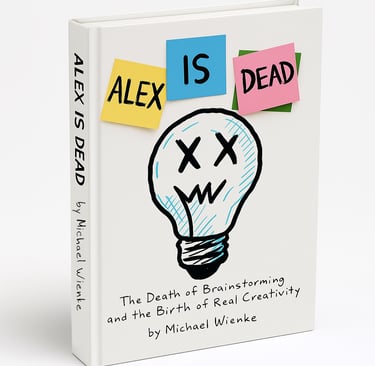You Don’t Have a Creativity Problem. You Have a Culture Problem.
Blog post description.
Michael Wienke
9/17/20252 min read


You Don’t Have a Creativity Problem. You Have a Culture Problem.
When organizations talk about innovation struggles, the diagnosis usually sounds the same: we just don’t have enough creative people. It’s a tidy explanation. Easy to put on a slide.
But most of the time, it isn’t true.
The real issue isn’t a shortage of creativity. It’s a culture that doesn’t give creativity the conditions it needs to grow.
The Palm Tree Problem
Think about planting a palm tree in the Arctic. The tree isn’t defective. It just can’t survive in that climate.
Creative people face the same challenge. Drop them into a culture dominated by approvals, risk-aversion, or fear of failure, and their ideas will struggle to take root. The environment doesn’t nurture creativity; it stifles it.
When leaders say, “We need more creative employees,” what they’re often describing is a climate mismatch, not a talent gap.
Why Ideas Stall
Research has shown that culture or “climate,” as the studies call it, is one of the strongest predictors of creative performance. Support, autonomy, psychological safety, and resources all matter. Without them, even strong ideas wither.
That’s why so many organizations end up disappointed. They invest in tools, workshops, or “innovation labs,” but the daily environment doesn’t change. People still learn quickly that safe ideas survive while bold ones quietly disappear.
The ideas weren’t lacking. The soil was.
It’s Not About Geniuses
We like to picture creativity as the product of lone geniuses. But in organizations, it’s almost always collective. People depend on each other, and on the systems around them.
Culture decides whether collaboration sparks or stalls. It sets the tone for whether people feel free to speak up, whether risk-taking is genuinely rewarded, and whether failure is treated as learning or as career damage.
Blame the people, and you’ll miss the point.
What Culture Really Means
Culture doesn’t have to be abstract. At its best, it looks like this:
Psychological safety: people can share ideas without fear of embarrassment or punishment.
Autonomy: teams are trusted to experiment and make decisions.
Support: leaders clear obstacles rather than create them.
Challenge: the work stretches people, but in a way that energizes rather than drains.
These aren’t extras. They’re the fundamentals that allow creativity to take hold.
The Hidden Cost of Culture
When those conditions aren’t in place, organizations pay a price. Even if it’s invisible. Employees stop offering ideas. Meetings fill with safe suggestions. Over time, people disengage not because they lack creativity, but because they’ve learned it doesn’t matter.
That’s why it’s misleading to frame innovation struggles as a “creativity problem.” It suggests employees aren’t imaginative enough, when in fact they’ve been given a climate that quietly discourages imagination.
The Shift in Perspective
If you’re serious about innovation, the question isn’t, how do we make our people more creative? The better question is, what kind of culture are we asking them to be creative in?
Because the truth is, most organizations already have more creativity than they realize. The challenge is building an environment where that creativity doesn’t freeze on contact.
Enjoy what you just read?


If you enjoyed this, then you'll love the rest of Alex is Dead. Download the complete book today in PDF or EPUB.
Connect
Stay updated with our latest news.
Follow
Join our mailing list
info@alexisdead.com
314-596-2486
© 2025. All rights reserved.